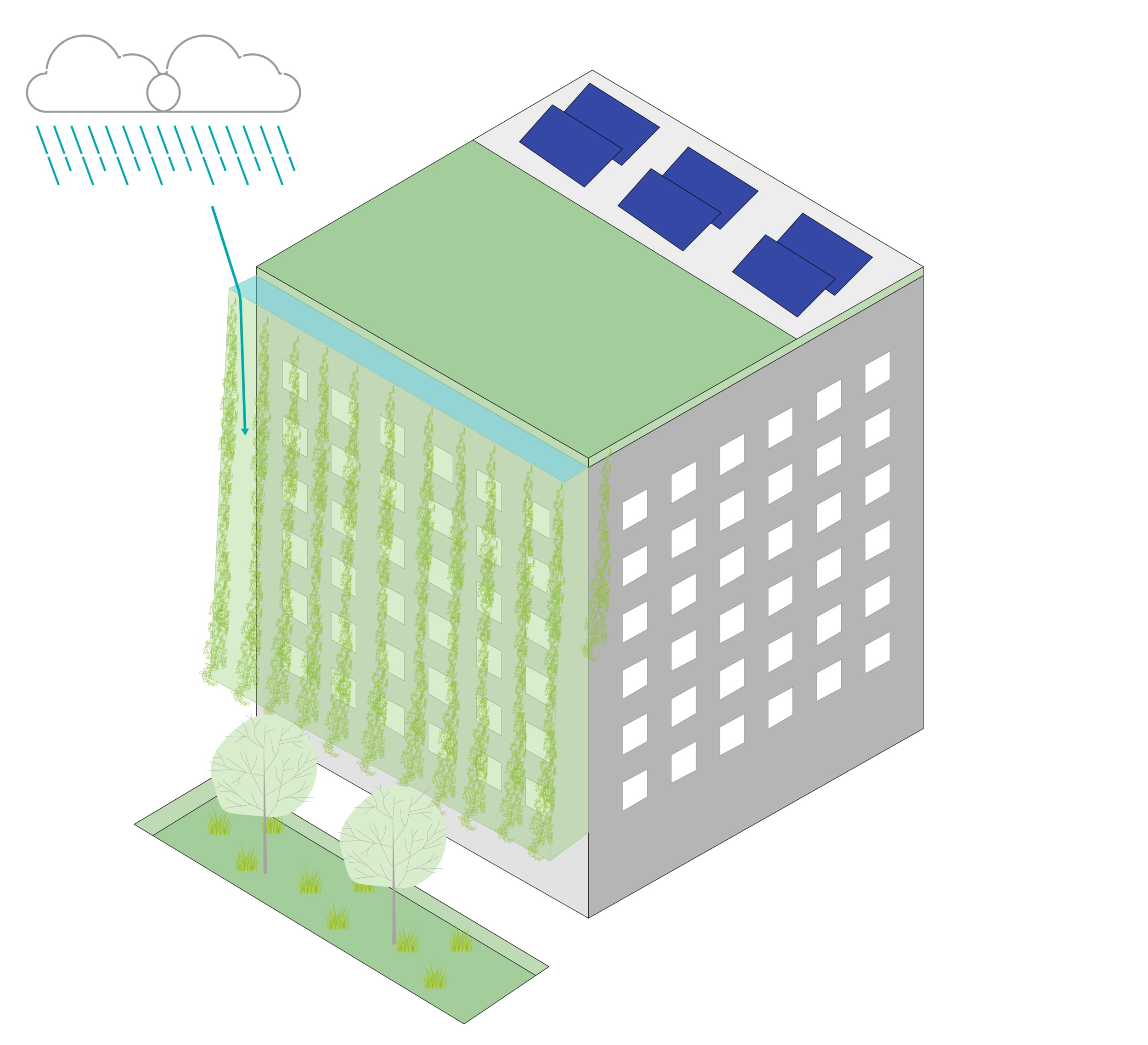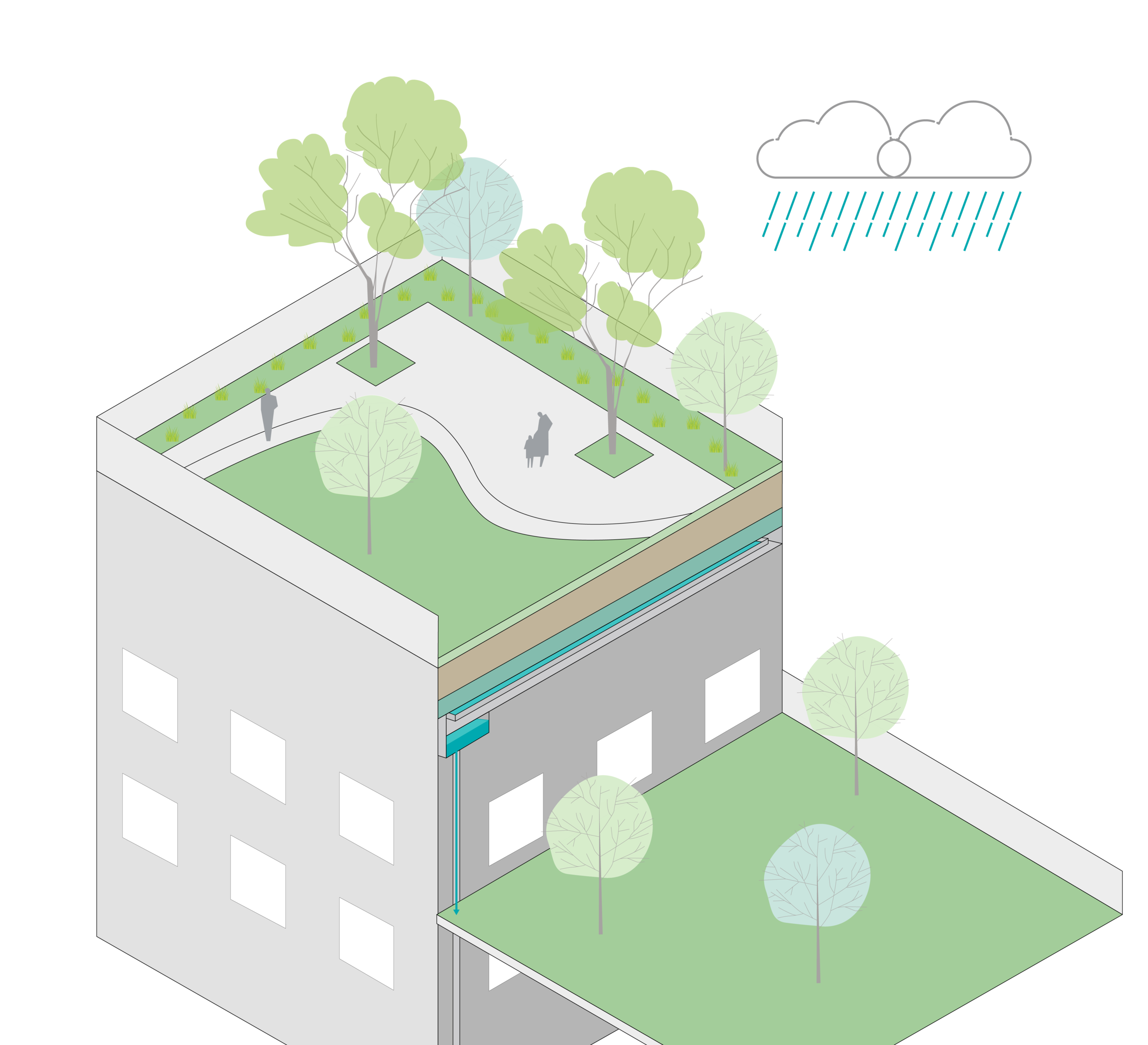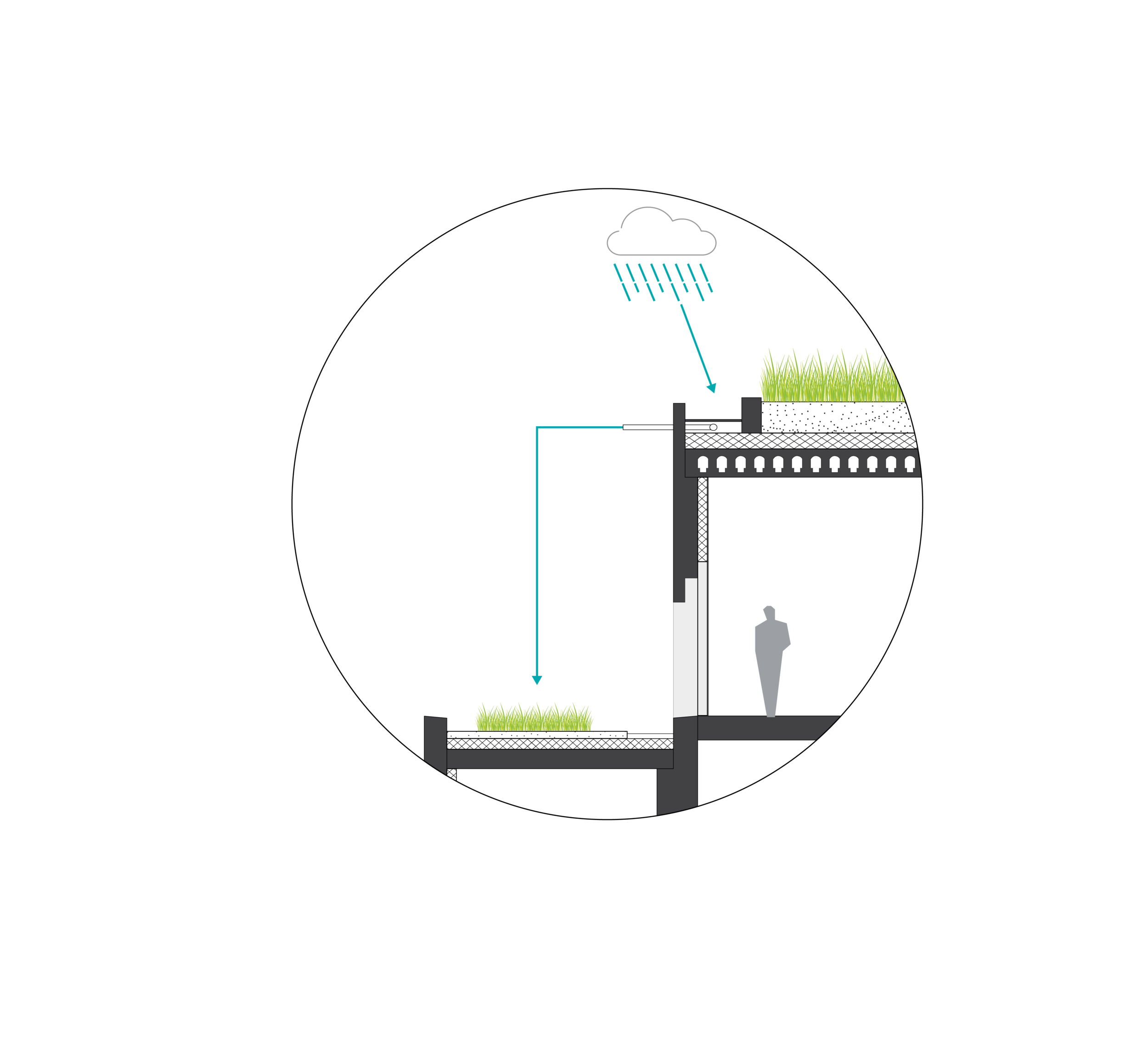Our sustainable architect graduate Mary
This is Mary.
Last year she joined our team to complete her master’s program, Sustainable Architecture and Landscape Design, at Politecnico di Milano in Piacenza (Italy).
Her research question was established from the principles of regenerative design. Through this research, she explored the spatial solutions for rainwater reuse and storage in the urban environment to promote blue-green infrastructure by way of nature-based solutions.
And she did an amazing job! Her final grade was 105/110 - a 9,5 in Dutch terms. Mary, it is a pleasure to have you in our team! Read more about her work in this interview.
Sustainable architecture
Can you explain to people with no architectural background what your thesis was about?
My thesis is meant to educate the general public on innovative ways to integrate nature into our urban lives and to bring awareness to the importance of rainwater reuse and storage.
And to people with an architectural background?
The thesis can be viewed as a catalogue of spatial interventions that effectively use the natural resource, rain. This effectiveness is done through the use of circular water systems, which is explained within the thesis. It is meant to be used as a guidebook for designing blue-green infrastructure with a circular rainwater system. Within my thesis, these spatial interventions and nature-based solutions are applied to a housing development case study. This is meant validate the blue-green design suggestions for architects and landscape architects.
How important are blue/green solutions to urban cities in your opinion?
Blue-green solutions are important and necessary for urban cities. It's no shock our climate is changing, and the projected number of people living in cities within 30 years is over half of the world's population. This means cities should be viewed as central points for mitigating climate challenges that are to come. This means integrating blue-green infrastructure through nature-based solutions.
What do you think are the biggest challenges for urban (green) development projects?
I would argue urban sprawl may be one of the biggest challenges for future green development projects. Urban sprawl can be seen as low-density housing development with segregated land use and high automobile use with lack of public transportation services. I come from the Los Angeles area, an auto-oriented city that can be seen as the epitome of urban sprawl. Because of this, I've seen first hand the damage urban sprawl has in terms of non-efficient use of resources, loss of biodiversity, and social inequalities. But challenges always come with solutions; this one being densification and decentralisation of resources.
Can you name 3 lessons every architect should take into account when designing urban retrofitting projects?
I would have to refer back to the three principles of regenerative design, which is outlined within my thesis.
The first lesson would be to design with context, so understanding the project area's layers and complexities.
The second lesson relates to adaptability; designing a retrofitting project that is well integrated and can adapt and evolve to the surrounding environment's current and future needs.
The last lesson is to use the concept of utilisation in the design process. This means promoting the effective use and preservation of the site's natural resources.
Creating circular systems through subsoil interventions:
What would you say is the biggest take home lesson from your thesis?
That designers must go beyond designing "sustainable" projects if we are to make an impact in combatting climate challenges. After studying the principles of sustainable design in my undergraduate and my master's, this thesis pushed me to go beyond these principles and discover a more effective way of creating environmentally beneficial spaces (this being through regenerative design).
Graduating at Field Factors
What was writing your thesis at FF like?
I was really lucky to develop and write my thesis here at FF. I was given extensive information on circular water systems, many recommendations and resources for blue-green infrastructure design, and endless support from the team. Not to mention the office environment was the perfect place for focus, as it is part of the TU Delft campus.
How did you perceive the support?
I believe the support I received as a graduate here at FF is a big reason for the success of my thesis. The team was encouraging and always available for useful feedback on my presentations.
What was it like to be an international in a Dutch start-up?
Exciting! I'd never experienced Dutch culture before this opportunity, but now I understand why the Dutch start-up scene is thriving. I've been inspired by the well-developed urban infrastructure and overall support for innovative solutions, such as the Bluebloqs system by FF.
What were the biggest challenges?
I think my biggest challenge could also be seen as something I enjoyed the most, which is the weather. Coming from sunny California, the Netherlands climate required a bit of an adjustment. However, once I became a graduate here at FF, I started to look at rain in an appreciative perspective. I came to love the days where my daily bike commute would come with a side of rainfall.
Would you recommend your friends to graduate at FF?
Most definitely. FF created a collaborative environment that encouraged growth in research and development. For this reason, I'd highly recommend a colleague of mine to establish their graduation project here.
What's next?
Do you have any suggestions for follow-up research?
Follow-up research from this thesis could be the upscaling of the circular water model proposed. The research would relate to the network transformation, from the implementation of the circular water model at a building scale to neighborhood to city and to region. This would clearly define the positive impacts designing with rainwater has on the world of architecture.
And we are curious… what are you going to do next?
I plan to continue my growth as a landscape architect here at Field Factors. I’ve been inspired by the urban environmental impact this team can make. Therefore, I will be assisting in the technical drafting of our Bluebloq systems and the visual realization of the projects that are to come.
Inspired by Mary’s story? Or do you have questions about her research? You can reach her at mary@fieldfactors.com.









